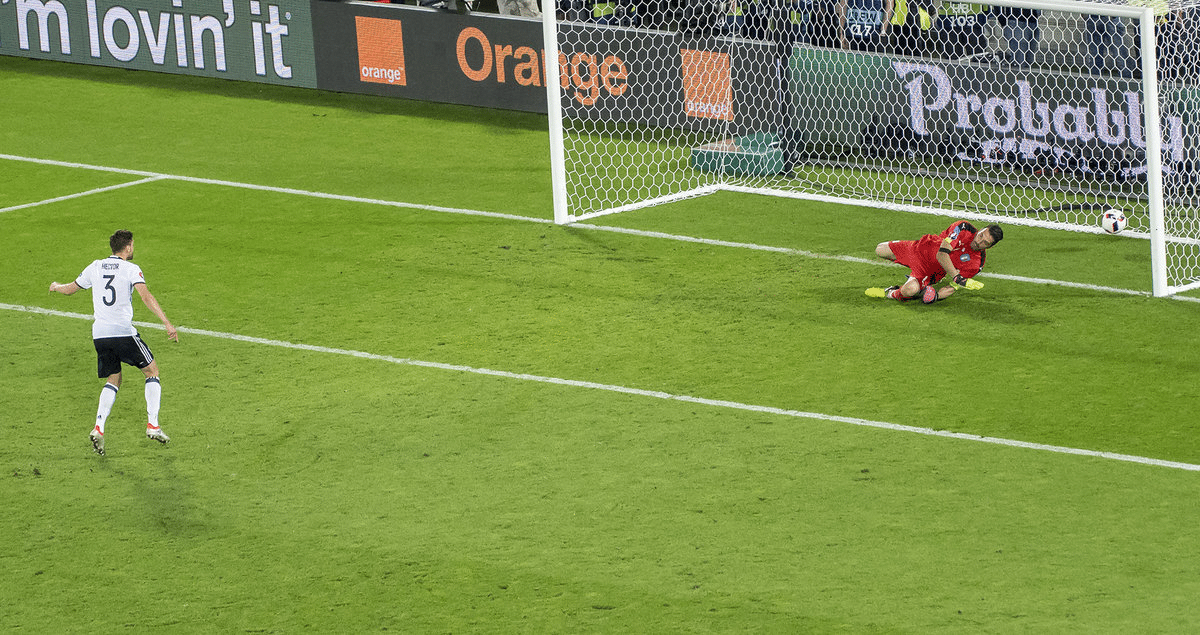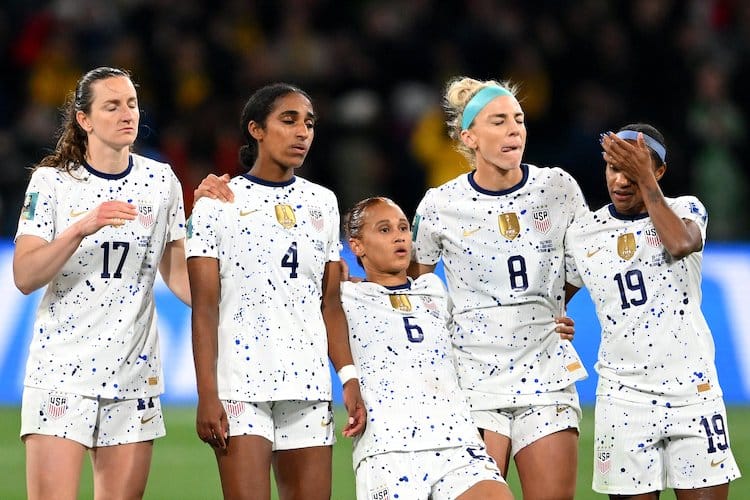

Have you ever seen or taken a penalty kick in a soccer game? I bet you have. And, I’m going to guess there was a little piece of you that was nervous. Whether you are a player, parent, or coach reading this, you know that penalty kicks can change the trajectory of a game.

Many special moments happen over the course of the game including possible fouls inside the penalty area. This results in a free kick also known as a penalty kick. It’s just a one-on-one battle between the kicker and the keeper.
Key Takeaways From This Article:
What makes the game even more exciting is when the game goes into a penalty shootout during an important match.
In this article, we’ll explain the soccer penalty kick rules, shootouts, and how it impacts the game.
If an offensive team is fouled inside the penalty area, the referee will award the team a penalty kick.

A penalty kick is a direct free kick taken from 12 yards away centered in front of the goal. The abbreviation for a penalty kick is ‘PK’.
The attacking team can choose any player that is currently on the field to take the PK. In most cases, this player is an offensive-minded player such as a Striker, Winger, or Central Attacking Midfielder (CAM).

There are certain situations where a team is awarded a penalty kick. If the defending team commits the following offenses inside their own penalty area, the result is a PK.
In order to legally take a penalty shot, a player must adhere to all of the following:

The process of taking a penalty kick during a match is simple. Here are the steps in which the offensive team kicks a PK:
A shootout will occur if a soccer match needs to determine a winner (i.e. – tournament or playoffs) and the end of regulation and overtime ends in a draw.

In a professional soccer match, a game will last 90-minutes plus (2) 15-minute overtime periods. In the event that the game is still tied, the captains will meet with the referee to determine which end of the field the shootout will occur and to decide which team will shoot first.
Both teams will then select five players to take penalty shots. Each team will alternate who shoots.
The team with the most penalty goals after the five shots will win the shootout.
If the shots made are split evenly after 10 shots (five by each team) then the penalty shootout will continue. Also known as “sudden death”, whichever team scores without the other team scoring in the round wins.
Penalty kicks were adopted in 1891 when the International Football Association Board (IFAB) decided it was necessary.
In today’s game, it puts the responsibility of the defensive team to not commit a foul where there’s a good opportunity to score by the opposing team. Just imagine if there were no penalty shots. Things would certainly get a little rough inside the penalty area.
It does make the game more enjoyable but can also be heartbreaking during a youth soccer game.
My son has been in tournaments where the championship game was determined by a shootout. We’ve been on both sides and I can tell you that these kids feel the extremes of pure joy and sadness.
It’s best to just treat any penalty kick or shootout as “part of the game”. Win or lose; make or miss…it’s just one shot on one day. There’s plenty of soccer ahead!
I'm Beau. A proud Dad of a MLS NEXT player, former soccer coach of 7 years, soccer enthusiast, and board member of our local youth sports program. I continue to love the game of soccer today the same way I did when I was 7. I love watching and teaching young players the game. I created soccernovo.com to share what I know about the game and provide a platform so other parents can learn more about youth soccer in the U.S. I also authored an eBook 'Soccer Coach Made Simple'. Learn more about Beau.